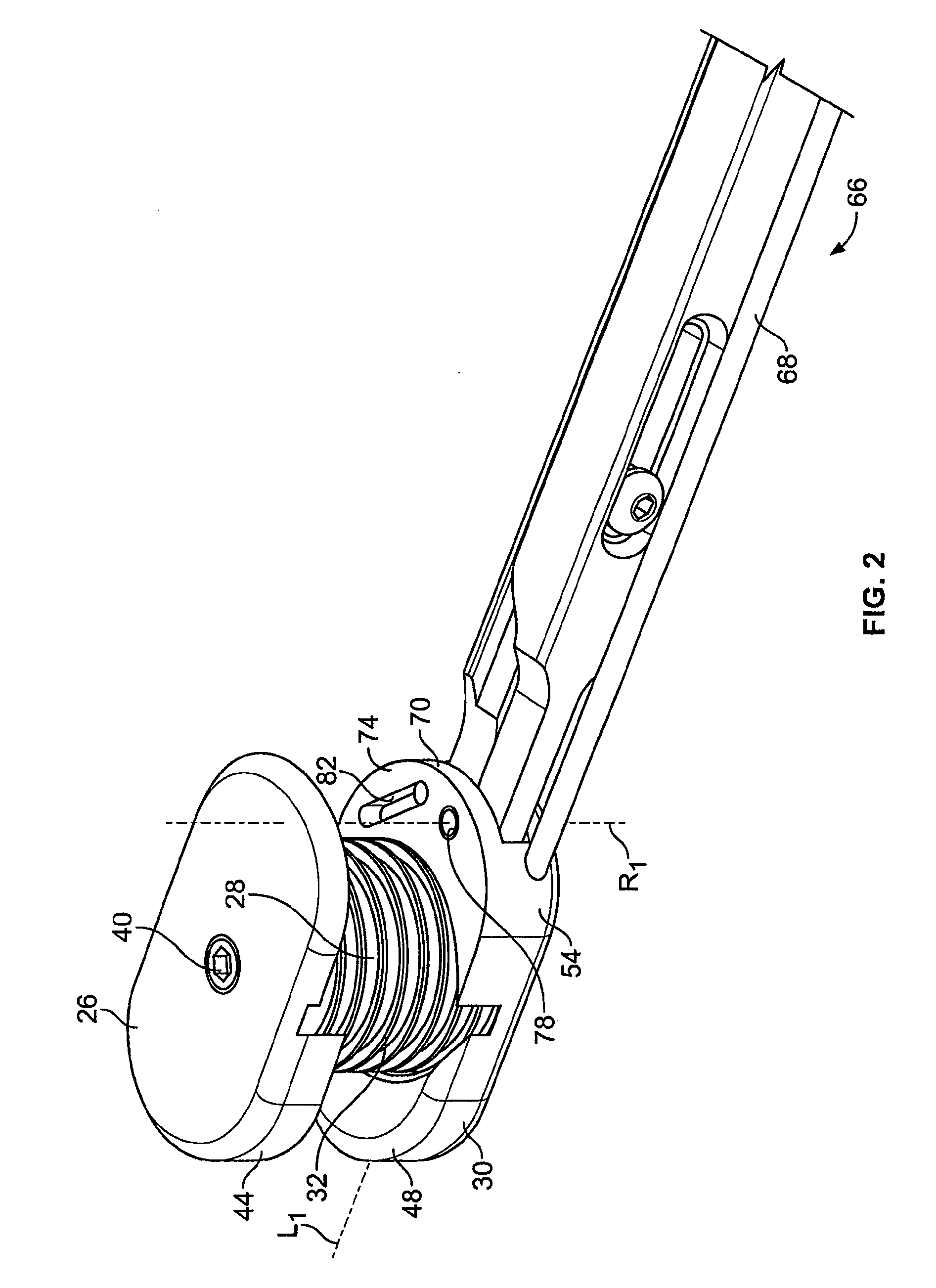Intervertebral disc space sizing tools and methods
a technology for intervertebral discs and sizing tools, applied in the field of sizing tools, can solve the problems of sciatica or pain, incontinence, urinary and fecal incontinence, etc., and achieve the effects of reducing the time required for surgery and patient time, reducing health risks, and reducing tim
- Summary
- Abstract
- Description
- Claims
- Application Information
AI Technical Summary
Benefits of technology
Problems solved by technology
Method used
Image
Examples
Embodiment Construction
[0176]A system for replacing a spinal disc from an intervertebral space between adjacent, superior and inferior vertebrae includes a number of alternative sizing tools described herein and used for determining the size of the intervertebral space. After the size is determined using the sizing tools described herein, an artificial disc implant with an appropriate size that fits the measured space can be implanted so that the relatively complicated procedure for implanting the disc does not need to be repeated. The sizing tools may be used for implantation of either a disc nucleus prosthesis (DNP) or a total disc prosthesis (TDP).
[0177]The sizing tools described herein have a holder with a distal end connected to an expandable device that is placed within the intervertebral or nuclear space. The illustrated expandable device, except for one configuration described below, has a superior cover or portion that can be shifted closer to or farther from an inferior cover or portion by an ex...
PUM
 Login to View More
Login to View More Abstract
Description
Claims
Application Information
 Login to View More
Login to View More - R&D
- Intellectual Property
- Life Sciences
- Materials
- Tech Scout
- Unparalleled Data Quality
- Higher Quality Content
- 60% Fewer Hallucinations
Browse by: Latest US Patents, China's latest patents, Technical Efficacy Thesaurus, Application Domain, Technology Topic, Popular Technical Reports.
© 2025 PatSnap. All rights reserved.Legal|Privacy policy|Modern Slavery Act Transparency Statement|Sitemap|About US| Contact US: help@patsnap.com



